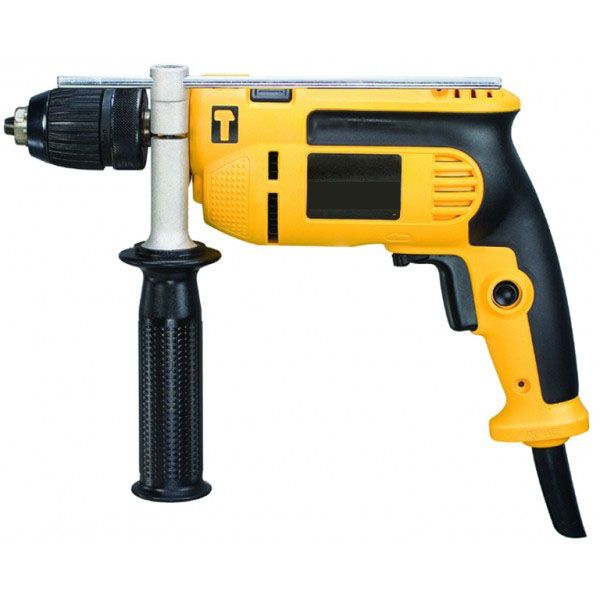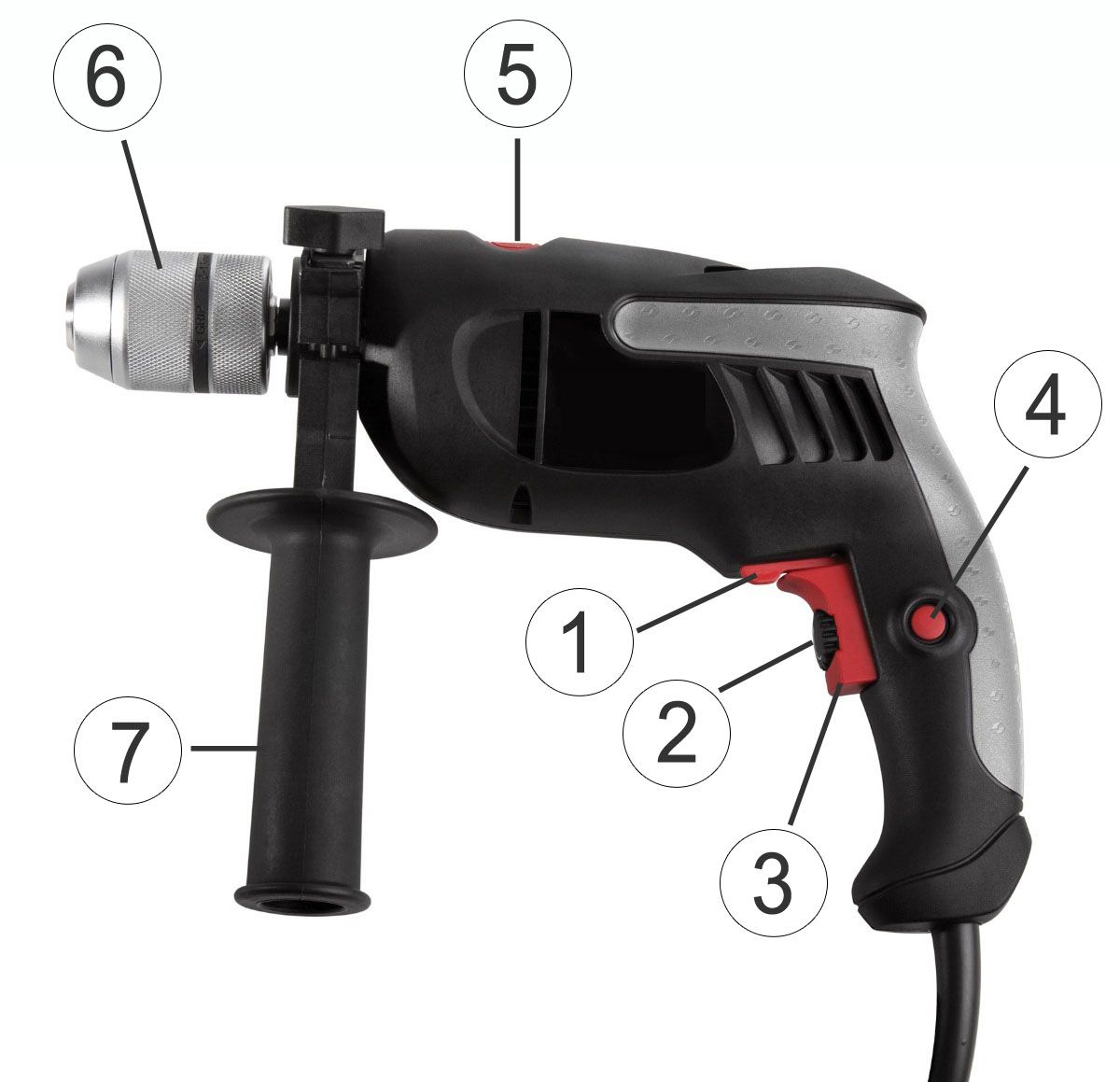
.
The electric drillThe drill is par excellence, without a doubt, the king of DIY.
Who has not used this versatile tool on occasion?
If we ask fans of diy or anyone who has a minimal “toolbox” for small domestic repairs, the vast majority will tell us that the first electrical tool he purchased was a drill.
This small device is, after the basic hand tools, such as a hammer, pliers, a set of screwdrivers, a set of spanners or a spanner, etc., the first electric machine that is purchased. Ahead, for example, of the keyhole saw, sander, mini grinder or any other portable electrical appliance.
For this reason, we are going to dedicate an entire article to this little machine that, as we will see below, can be so versatile.
This device can acquire countless names such as brace, drill, auger, top,… but the one used most frequently is “drill”.
Its name comes from the action of “drilling” which consists of making cylindrical, through or blind holes, on any type of material such as wood, plastic, steel, aluminum, brick, concrete, etc, etc.
This process is done using a tool called “drill”, which is attached to the chuck, also called tool holder, of the drill. In another article we will see the different types of drill bits and its various applications.
 Of all the machining processes, drilling is considered to be one of the most important due to its wide use and ease of execution, since it is one of the operations that is necessary in most machining works. diy.
Of all the machining processes, drilling is considered to be one of the most important due to its wide use and ease of execution, since it is one of the operations that is necessary in most machining works. diy.
The types of drills are very varied and in general it can be said that they are made up of a very compact and lightweight block that has a motor that rotates the tool-holder spindle through a speed reducer.
The motor of the drills used in DIY is electric and, the most modern models, usually have electronic control of speed. In more professional or industrial models, compressed air motor machines are also used.
The smaller models, which are used in DIY, usually have a fog in the shape of a pistol butt. However, a second handle can be attached to it, to facilitate the performance of harder jobs.
.
The main parts that make up this tool are the following:
1) Rotation direction selector: By means of this lever, the motor can be made to turn clockwise or counterclockwise. This makes it possible for us to use the drill as a screwdriver.
two) Speed selector: With this roulette we select the maximum speed of rotations per minute.
 3) Trigger you connection: This is the main switch of the tool. Making the engine start. If the device has electronic control, depending on the pressure exerted on this switch, the motor will increase or decrease its speed.
3) Trigger you connection: This is the main switch of the tool. Making the engine start. If the device has electronic control, depending on the pressure exerted on this switch, the motor will increase or decrease its speed.
4) Main switch lock button: This button makes it possible to keep the connection trigger in the On position, without the use of the hands. It is very useful when the drill is attached to an accessory and becomes a stationary tool, such as a drill press.
5) Striker Selector: This switch makes it possible to choose between turning the tool holder or, simultaneously with the turning movement, a hammering movement also called firing pin. The latter is essential for drilling very hard construction materials, such as concrete.
6) Chuck or tool holder: This piece is where the bits are inserted. Its interior is shaped like a clamp, which is what blocks the drill bit and prevents it from moving from its location. There are two types of chuck, one that needs a special key for its use, and another called “quick change” that does not need any key or accessory, but the change of the bit is done with the hands.
7) Additional handle: It is an optional accessory but very useful for carrying out the toughest jobs, such as drilling concrete.
.
For optimum performance of the tool and for a perfect finish of the work carried out, the electric drill must meet minimum requirements.
The minimum technical characteristics that, in our opinion, should have an electric drill intended for DIY jobs, including the hardest, are those that we have highlighted in orange below:
With a motor with a power of about 750w, you are sure that it will be up to the task in any job you propose.
If you are a restless DIYer and you are not impressed by any type of work, however complex it may be, do not choose a machine with less power. The difference in money is not that much, and you will be glad.
- Quick change tool holder.
If you use the drill relatively regularly, do not hesitate, choose a model that has this type of chuck. It will cost you a little more, but you will still be happy.
- Electronic speed control.
The electronic speed control gives you complete control over the electric drill, giving you greater precision and, therefore, better finishes.
- Reversible direction of rotation.
If you have reversible direction of rotation, you can use the electric drill as an electric screwdriver. If you are going to use the electric drill to hang 4 pictures and little else, it will not be worth it. But otherwise, we recommend it. Your hands and arms will thank you.
- Tightening torque control.
The tightening torque is usually brought by battery drills. It is very useful for screwedsince the maximum force to be exerted on the screw is preselected.
However, if the drill has electronic speed controlyou can get by just fine without this feature.
Totally essential for drilling very hard construction materials, such as concrete.
Very useful in precision drilling.
Very useful since it provides total autonomy, making it possible to drill in places where there is no possibility of an electrical connection.
Until a few years ago, we have to say that most battery-powered drills for amateurs did not have enough power to perform the toughest jobs, even if they had a hammer.
To get a really powerful electric drill and whose batteries have an acceptable duration, we had to go to more professional models, and here the price difference could be high.
However, from a few years to this part, it has changed and continues to change in a remarkable way. Now there are very interesting options. 18V drill drivers are sold, with great power and quite affordable prices. One of the most prominent examples is the Ryobi 18V Drill Driver.
In this other article, you can see the technical characteristics of the tool, as well as the harsh tests to which we have subjected the Ryobi 18V drill driver.
.
At this point, we would like to see the different bits and their uses, as well as some of the many accessories on the market that give this power tool its enormous versatility…
But we will see this in future articles.
Stay tuned, don’t miss them. To do this, you can subscribe by entering only your email, and we will notify you.



